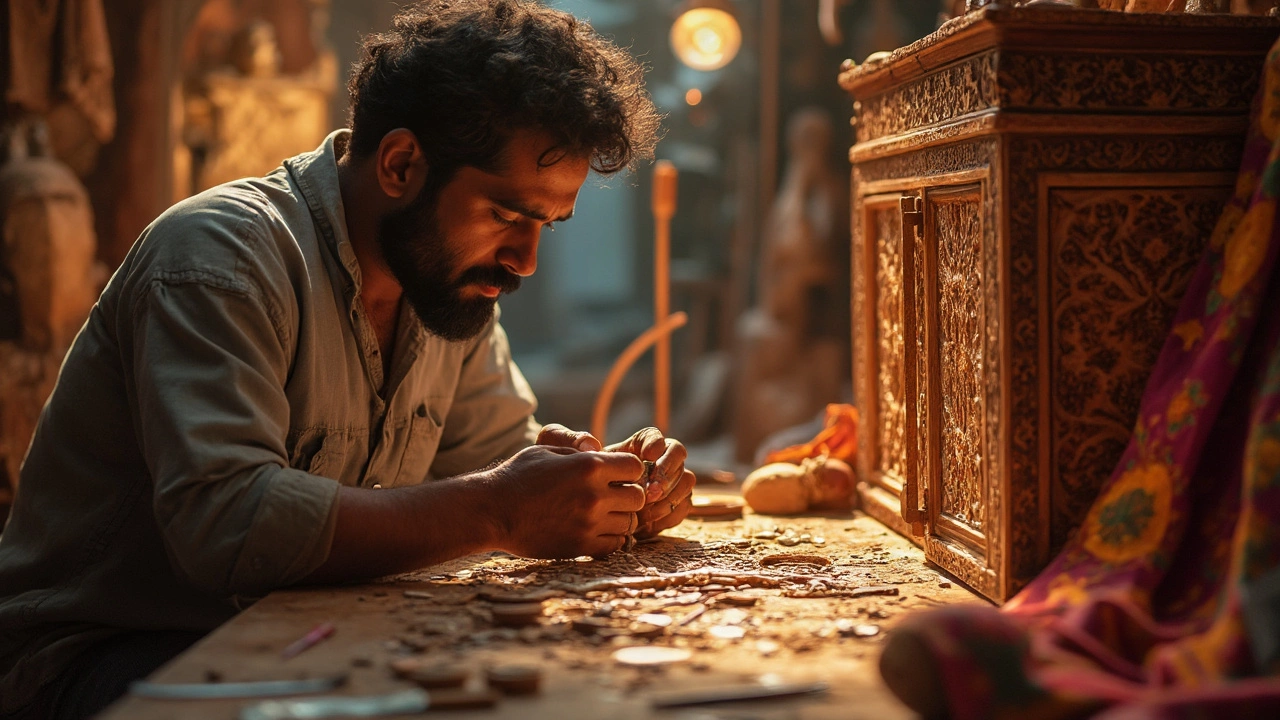Craftsman India: Skills, Trends, and Business Opportunities
If you’ve ever admired a solid teak chair or a precision metal tool, you’ve seen the work of Indian craftsmen. These artisans blend old‑school skill with today’s technology, creating products that sell locally and abroad. In this guide we’ll break down why they matter, what trends are shaping the scene, and how you can tap into their expertise for your own projects.
Why Indian Craftsmen Matter
First off, Indian craftsmen are a huge part of the country’s manufacturing engine. From the textile hubs in Gujarat to the woodworkers in West Bengal, they provide the hands‑on labor that turns raw material into finished goods. Their deep knowledge of local woods, metals, and fabrics means lower waste and higher quality – something factories in other regions struggle to match.
Second, they keep traditional techniques alive while adopting new tools. You’ll find a carpenter using a CNC router for precise cuts, yet still hand‑carving decorative details. This hybrid approach gives products a unique story that appeals to modern consumers who love authenticity.
Third, the cost advantage is real. Labor rates in India are competitive, and because many craftsmen run family workshops, overhead stays low. That translates into better margins for anyone who partners with them, whether you’re a small online retailer or a big brand looking for a reliable supplier.
How to Leverage Craftsmanship in Your Business
Ready to work with Indian craftsmen? Start by scouting reliable hubs. Cities like Jodhpur for stone carving, Hyderabad for metalwork, and Coimbatore for engineering tools have clusters of skilled workers. Visit local trade fairs or use online marketplaces that verify sellers.
Next, define clear specs. Craftsmen thrive on detailed drawings or prototypes. Provide measurements, material type, and finish details up front – this cuts down on revisions and speeds up production.
Don’t forget quality checks. Even with trusted workshops, a simple inspection checklist helps catch defects early. Look for sturdy joints in furniture, smooth edges on metal parts, and consistent color on textiles.
Pricing is another key point. While costs are lower than many countries, you’ll still need to factor in transport, customs, and any certifications required for export. Work out a per‑unit price that covers these and leaves room for profit on both sides.
If you’re a hobbyist, you can still benefit. Many craftsmen offer small‑batch orders or even custom one‑off pieces. Reach out with a clear idea and a budget, and you’ll likely get a unique item that’s hard to find elsewhere.
Finally, keep communication open. Use pictures, video calls, or even short on‑site visits to build trust. A good relationship often leads to better rates, priority scheduling, and the chance to co‑create new designs.
Indian craftsmen are more than just producers; they’re storytellers who embed culture into every piece. Whether you’re looking to source furniture, tools, or decorative items, understanding their strengths and working smartly with them can give your business a real edge. Dive in, ask questions, and watch quality and profits grow together.

High-End Indian Furniture Makers: Crafting Elegance and Comfort
Explore the world of high-end furniture makers in India, renowned for their craftsmanship and elegance. Indian artisans blend traditional techniques with modern design to create luxurious pieces. Discover the key players and what sets their creations apart. Uncover the artistry behind India’s thriving high-end furniture industry. Get insights into choosing the right pieces for your home.
